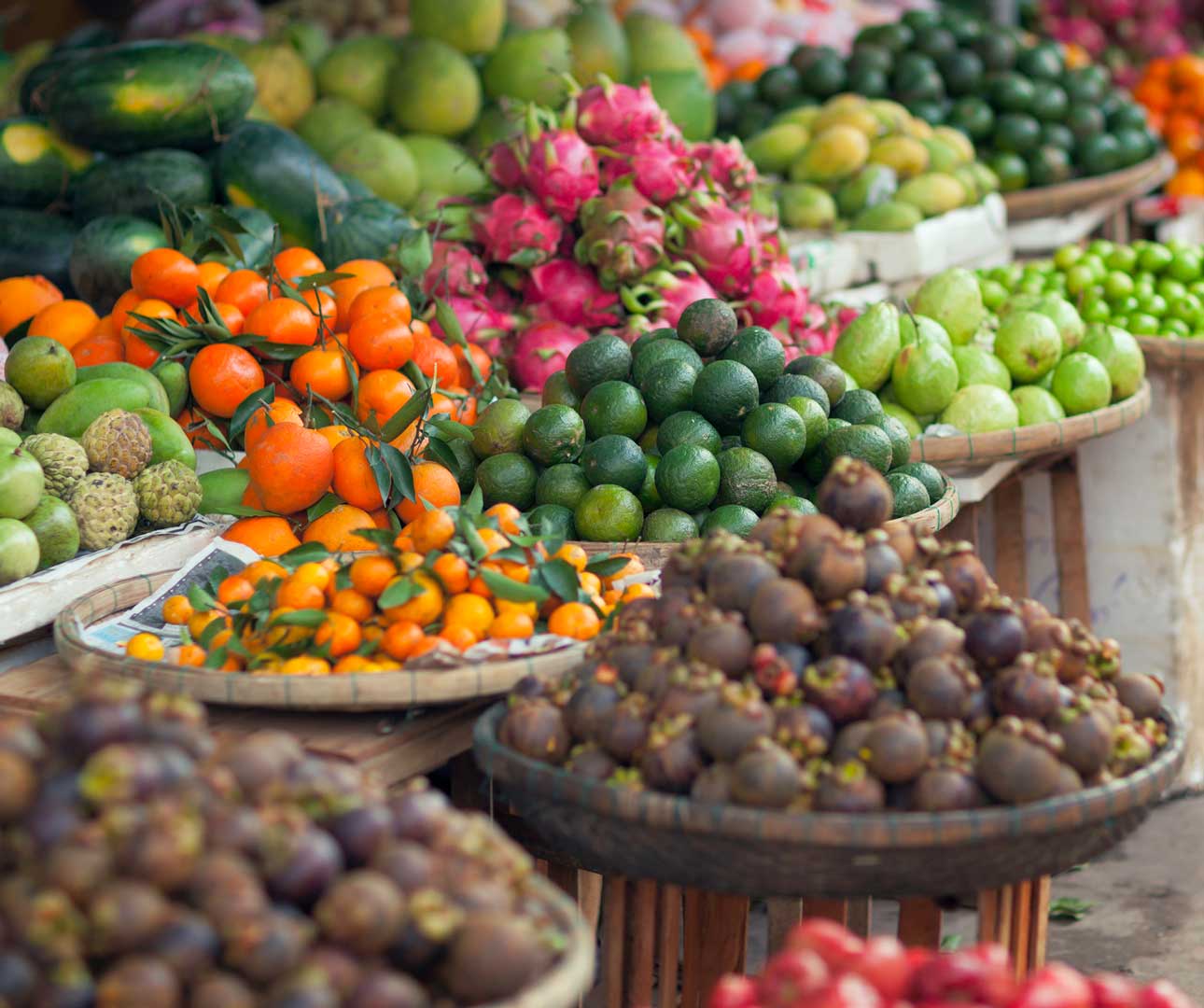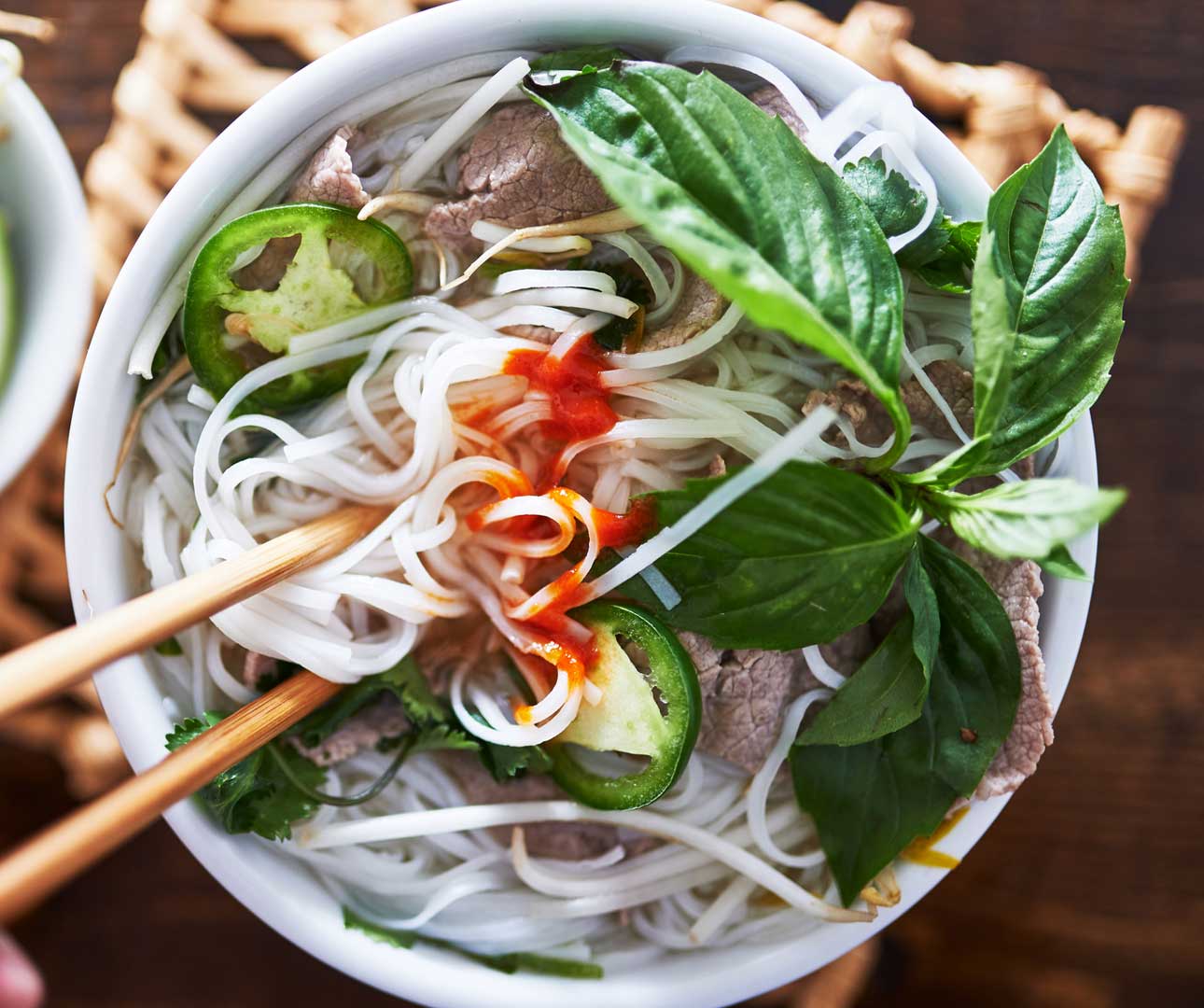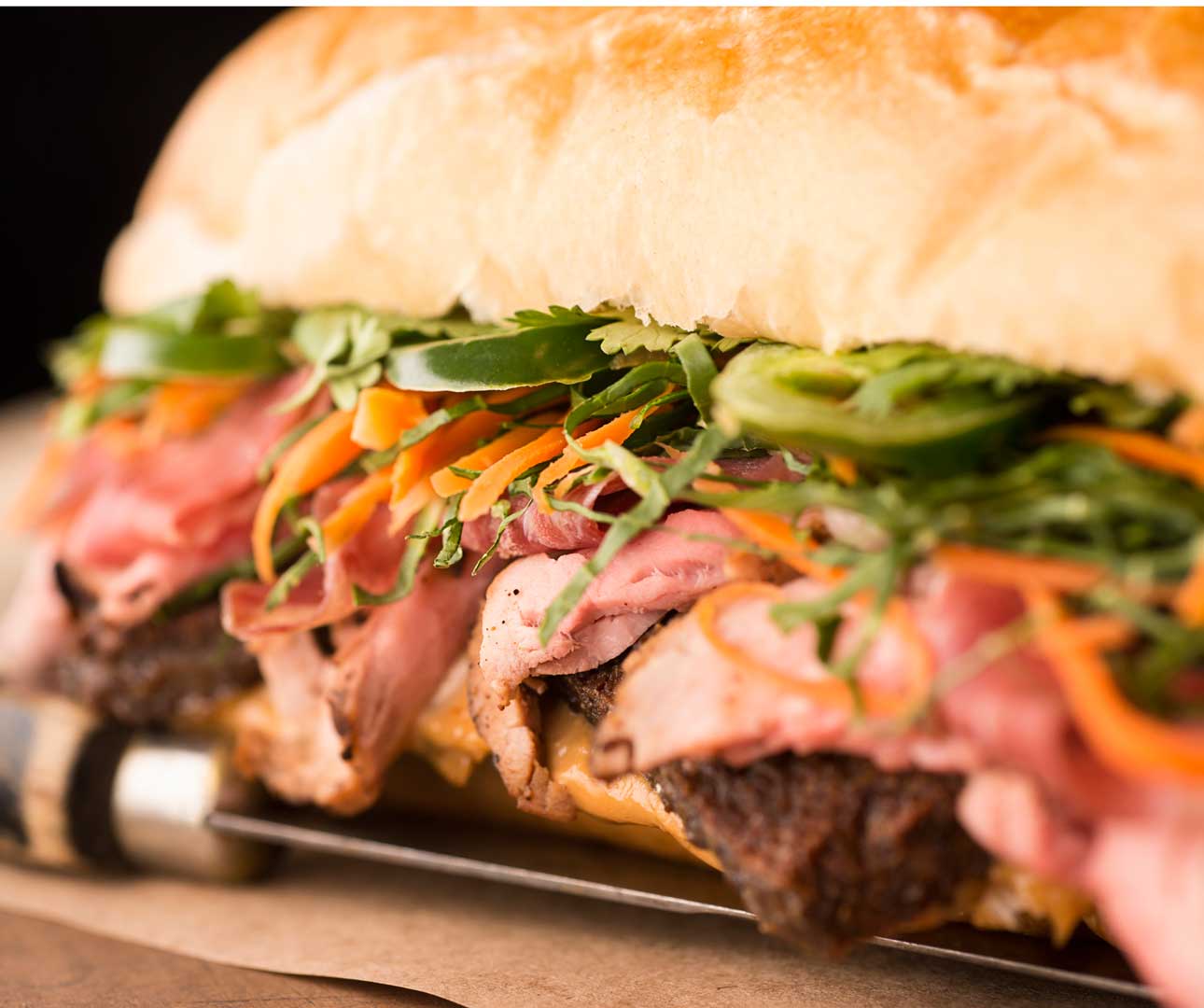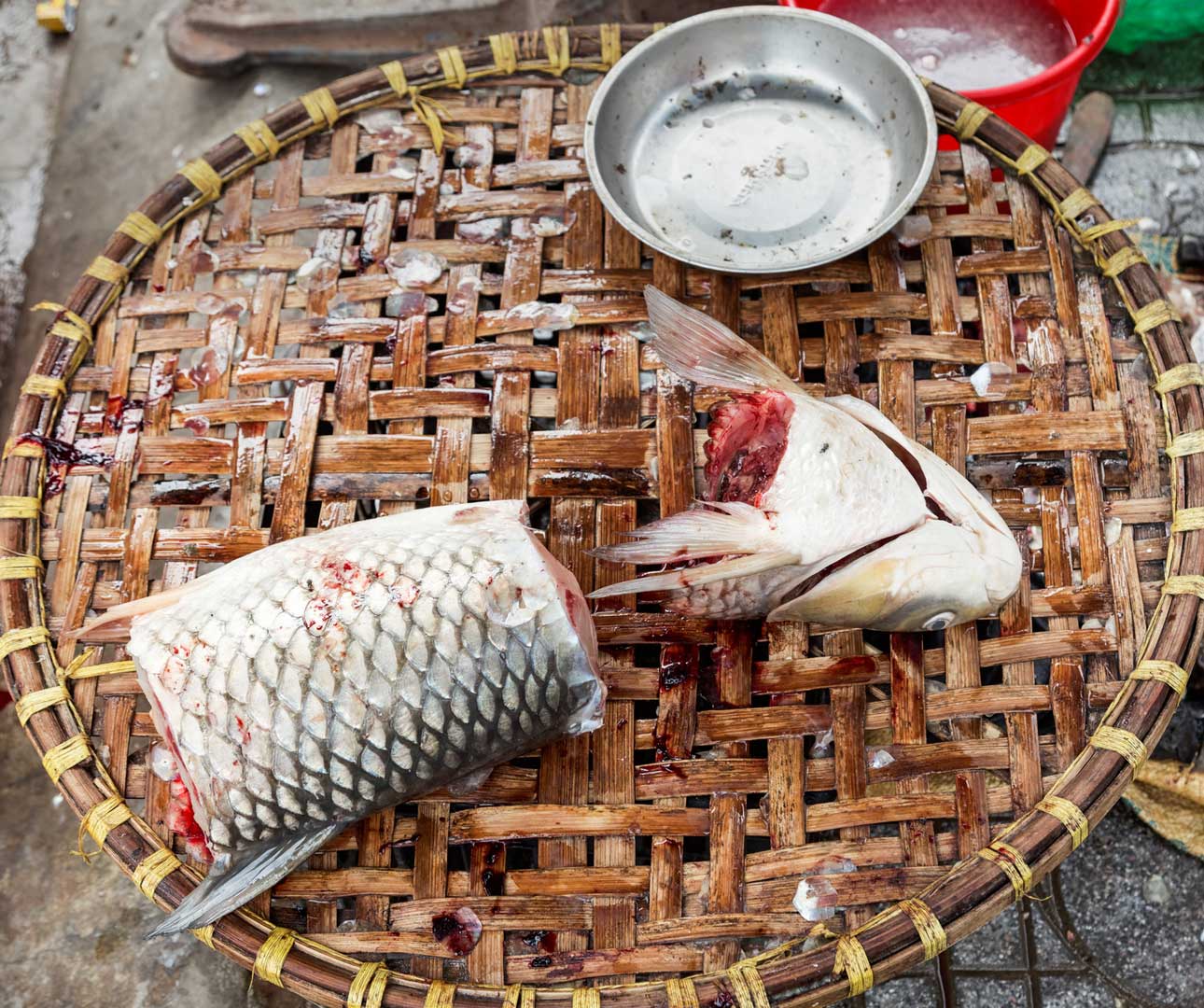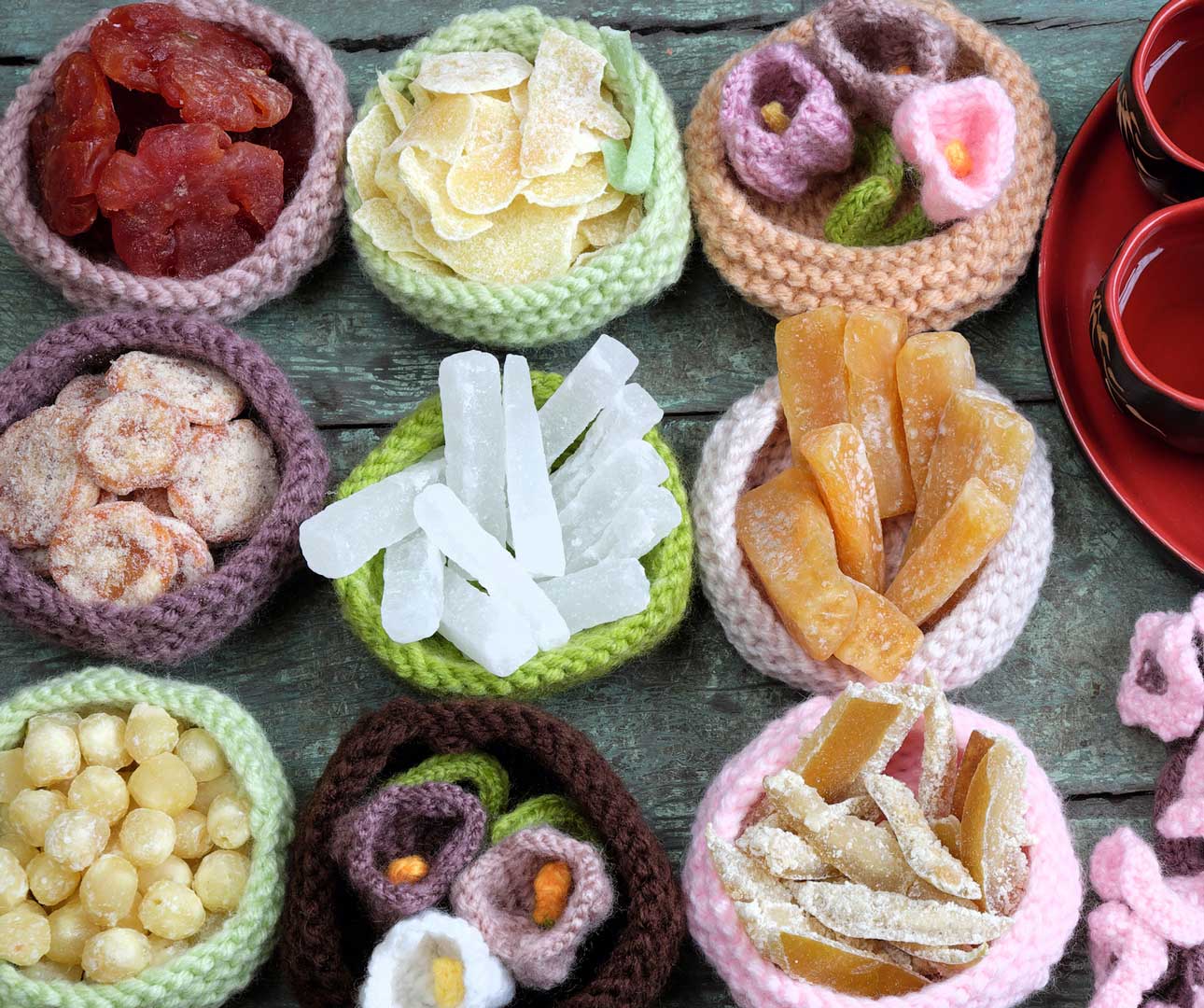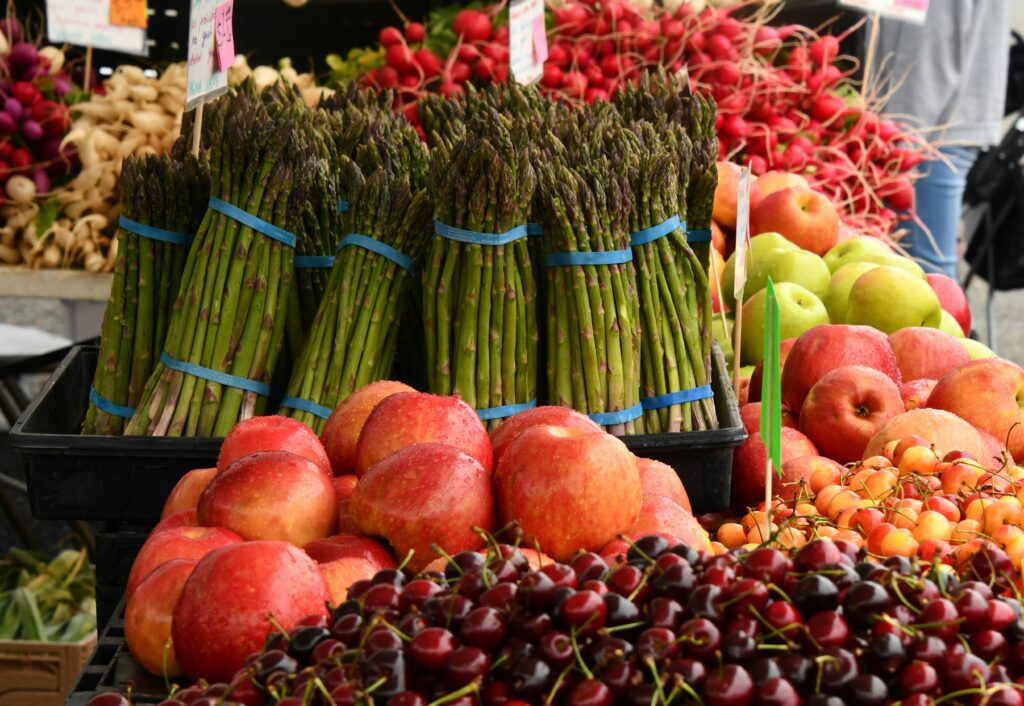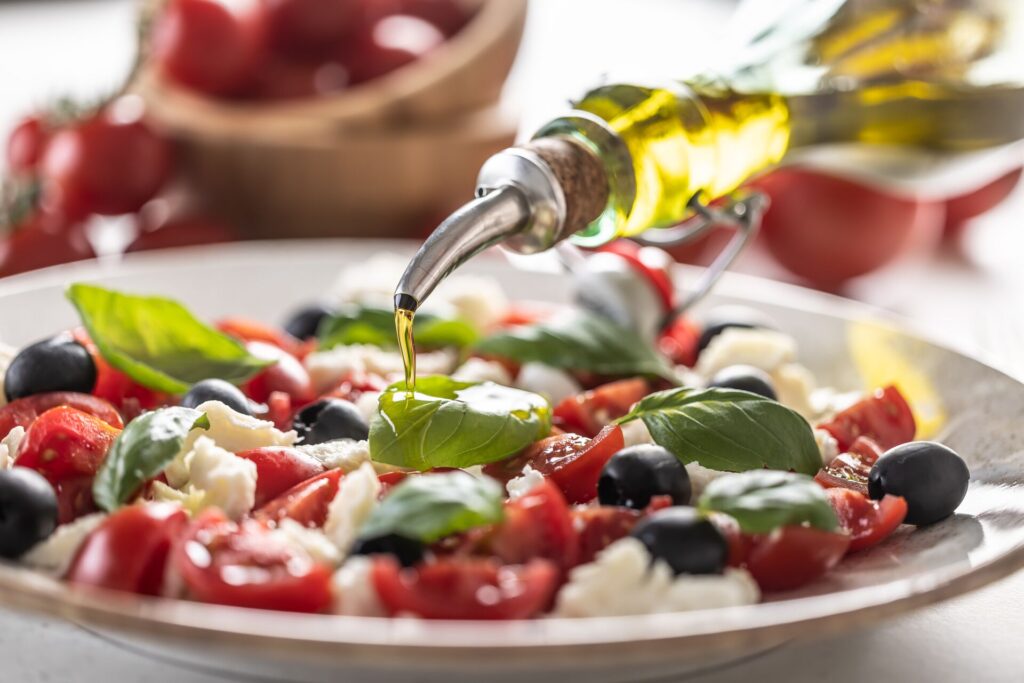Shaped like a writhing snake and roughly the size of Italy, Vietnam’s geography (with Hanoi in the north, dominating the central highlands, and Ho Chi Minh City forming the biggest hub for the fertile Mekong delta in the south) has heavily determined its culinary culture. From sizzling stir-fried dishes to noodle soups, from bone broths to prawn cakes, join us as we delve a little deeper into the rich world of Vietnamese food.
Fruit Market © iStock/LordRunar
In the north, Chinese influences on Vietnamese food are everywhere, which is perhaps no surprise given its northerly neighbor and position on the South China Sea. There’s steaming bowls of phở and congee (a rice porridge topped with flavorings and sides), dumplings, sticky rice balls, or rolled out into bánh xèo (savory fried pancakes stuffed with pork, shrimp, onions and sprouts), as well as plenty of play on sweet, sour and salty flavors. Soy sauce is used instead of the fish sauce that’s slipped into everything elsewhere.
Pho © iStock/Rez-Art
Quite possibly one of the most famous Vietnamese dishes, phở cannot merely be referenced in passing. Pronounced “fuh”, this steaming soup is quite simply Vietnam’s soul food. Comprising of a fresh, flat rice noodle dish in a savory broth, it’s topped with meats, mung bean sprouts, basil, cilantro leaves, red chilies and lots of fish sauce, as well as a thick lime wedge for a refreshing cut of acidity. It’s one of the most popular dishes in Vietnamese food, and it can be eaten for breakfast, lunch or dinner, and has many regional variations. One of its most famous is Huế’s version. Much meatier, with lemongrass and a lick of chili oil, it’s a spicier take on a dish that can often be found simmering in giant pots at food markets or in oversized bowls at restaurants on every street corner.
You may also like: The History of Martial Arts in Vietnam
Banh Mi © iStock/Rudislll
Thanks to its colonial past, there are some French elements to Vietnamese food. Beginning in the 18th century and not ending until 1954, the history has had a lasting impact on Vietnam’s flavors. Not least in bánh mì, which effectively uses a crusty French baguette as an edible plate for any food you want to fill it with. But there are other less known items such as crispy pork belly, asparagus, pâté and sardines scattered throughout the cuisine, too. These are served as first courses at weddings, and often their names (asparagus is known as mang tay or “western bamboo shoots”), reveal their foreign ancestry. Like the French, the Vietnamese have elevated food from a necessity to a national obsession. If anybody asks, “an com chua?” (“would you like any food?”), the polite response should always be positive, as it’s often seen as a great excuse for a conversation.
Freshly Prepared Fish © iStock/Carstenbrandt
Renowned for its bright colors, from turmeric-yellow to deep purple shrimp pastes, Vietnamese food has also made a name for itself as one of the world’s freshest, healthiest and lightest cuisines. Using pickled vegetables, Vermicelli noodles, spring rolls (gỏi cuốn) and seasonal salads, Vietnamese food is rich in fiber and often low in calories. At the heart of it all is a deep respect for balance. Dishes, drawing on Indian, French and Chinese influences, seek harmony in mixing and matching spiciness, sourness, bitterness, saltiness and sweetness. Though in the south, the odds undoubtedly tend to be stacked in favor of sweetness. This is partly because the tropical climate produces a lot more coconut groves, jackfruit trees and herb gardens, but there also seems to be a sweeter tooth. There’s far more palm sugar used and coconut milk, too; even the broths for phở tend to be sweeter in the south.
A great example of this balance in flavor profiles is Bún bò Huế. This is a rice noodle dish using Vermicelli noodles, sliced beef, chả lụa, and sometimes pork knuckles. It originates from Huế, and is gorgeous mix of spicy, salty, and savory flavors.
You may also like: The 10 Most Beautiful Things to See in Vietnam
Tet Lunar New Year © iStock/Xuanhauangho
Finally, no culinary exploration of Vietnamese food would be complete without stopping by the cooking schools of Hội An. Here, you can try (and make) some of the best food in Vietnam, like bún chả or cơm tấm, in a hands-on cooking class with a renowned chef. You’ll be surrounded by picturesque villages where locals cultivate and harvest vegetables, all used in your cooking class. Alternatively, if you’d prefer to head into town, Hội An is famous for its banh vac (a flower like dumpling containing shrimp), cao lầu (a specialty involving chewy noodles on slices of pork and rice cracker, surrounded by a dark, oily gravy) and cơm gà (chicken rice with fresh herbs, onions and broth). Try to pace yourself though, once entered, Hội An is hard to leave.
If you’d like to work your way through Vietnam’s foodie experiences, book a place on Luxury Gold’s Spirit of Vietnam and come with an empty stomach!
